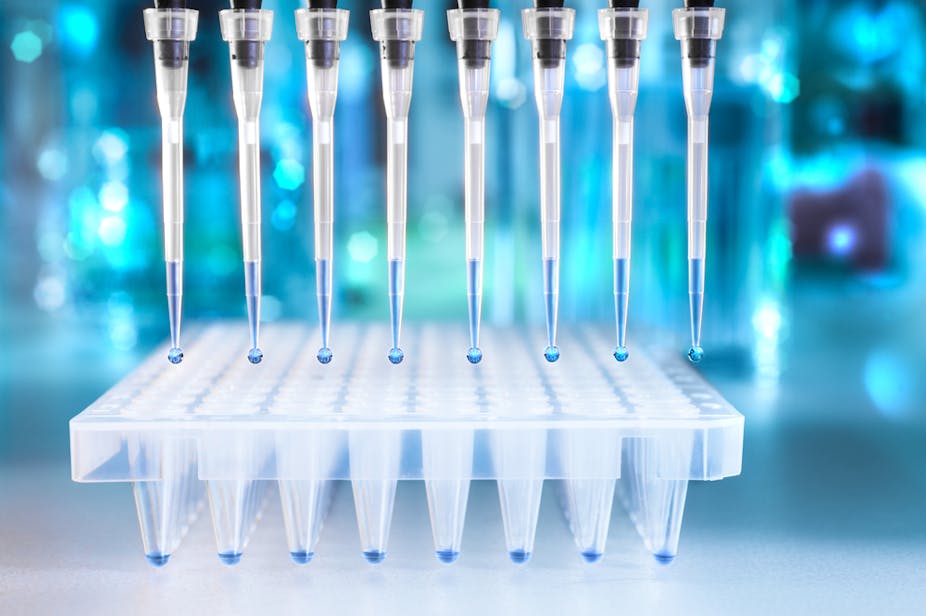As genomic medicine advances, the possibility of manipulating our genetic makeup, and that of our future children, is rapidly becoming a reality. But, even if we could edit out genetic disease, does that mean we should?
The launch of the 100,000 Genomes Project by the government in 2012 is part of a wider trend to launch whole-genome sequencing into mainstream healthcare. Whole genome sequencing – the examination of a person’s entire DNA sequence – is set to drastically alter the ways we approach health and disease. By providing detailed information about a person’s genetic constitution, genome sequencing has the potential to explain both current health problems as well as forecast future ones. This may be through identifying susceptibility to late-onset diseases, such as Alzheimer’s disease, or revealing our “carrier status” for inheritable conditions – that is, conditions we unknowingly carry in our genes that we could pass on to our children.
Starting to become a reality
Genome sequencing appears set to eventually become a standard part of pregnancy planning. Private genetics companies already use the techniques to screen couples for large numbers of genetic conditions simultaneously, before the female partner even becomes pregnant. If the couple is found to be at risk of passing on a genetic condition, they are offered various interventions to prevent the birth of an affected child. It is anticipated that embryo genome editing techniques – techniques to remove disease-causing genetic mutations – might one day be among these interventions.
While genome sequencing on a mass scale is now largely feasible, important questions are yet to be answered about the ways they could, and should, be used. One group whose voices have been underrepresented in these debates are those of people already living with genetic disease.
Imagining futures

My research, the Imagining Futures project – which has now also been transformed into an art installation by Esther Fox at the Science Museum, London – explored the perspectives of people affected by a genetic disorder, focusing on one particular condition: spinal muscular atrophy (SMA). Like many of the other genetic diseases for which genome sequencing could be used to prevent, spinal muscular atrophy is both variable and unpredictable. It causes muscle weakness and breathing problems across a wide spectrum of severity, ranging from death in infancy to adult-onset disability.
Through 36 in-depth interviews with people living with spinal muscular atrophy (meaning either they or their family member had the condition), followed by a nationwide survey of 337 families affected by the condition, I explored attitudes towards genetic screening, and its associated social and ethical dilemmas. The results were, perhaps unsurprisingly, complex.
While most people (75%) supported some form of screening for spinal muscular atrophy, there was marked ambivalence. Concerns were raised – particularly by people diagnosed with the disorder – about the implications for society should people with their condition stop coming into the world.
For people with the disorder who live full and satisfying lives in spite of, or even because of, their condition, it is not hard to see how even the idea of screening is threatening. Amelia, who is in her late twenties with spinal muscular atrophy, said:
I can’t support screening, for the simple reason that I have SMA. If I, of all people, support screening, then what I am saying about my own life? It would be the same as me saying that people like me shouldn’t have been born.
Among parents who had lost a young child to spinal muscular atrophy, however, support for screening was understandably stronger. Nevertheless, even within this group, experience with the disorder was not usually presented as entirely negative. Rebecca, the mother of a baby (Oliver) who died from the disorder at nine months, viewed the situation in a way that was typical of other parents in her situation, even those who supported screening:
For all the heartache and pain we went through, I wouldn’t look back now and wish Oliver hadn’t been born. He changed the lives of everyone he met. I would have missed out on that too had he not been born. So yes, we might have had a different child (without SMA), but that child wouldn’t be Oliver. And for me that’s the point.
When considering whether (and how) to eradicate a genetic disorder from the human gene pool, it’s important that we consider the views of people like Rachael and Amelia, whose experiences would disappear alongside the condition. Life with genetic disease is usually difficult and painful, but it is also often filled with positivity, triumph and growth – not only for the person with the disorder, but also their families and wider society. The stories told by these families highlight the various ways that even stories of pain and difficulty have something positive to offer society. Ultimately, they reflect a fundamental part of what makes us human.

